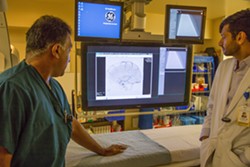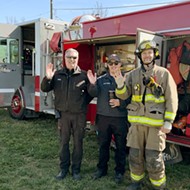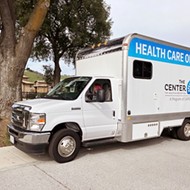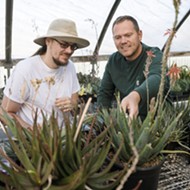[{
"name": "Ad - Medium Rectangle CC01 - 300x250",
"id": "AdMediumRectangleCC01300x250",
"class": "inlineCenter",
"insertPoint": "8",
"component": "2963441",
"requiredCountToDisplay": "12"
},{
"name": "Ad - Medium Rectangle LC01 - 300x250",
"id": "AdMediumRectangleCC01300x250",
"class": "inlineCenter",
"insertPoint": "18",
"component": "2963441",
"requiredCountToDisplay": "22"
},{
"name": "Ad - Medium Rectangle LC09 - 300x250",
"id": "AdMediumRectangleLC09300x250",
"class": "inlineCenter",
"insertPoint": "28",
"component": "3252660",
"requiredCountToDisplay": "32"
}]
On Nov. 14, 2019, Ingeborg Pendley, 90, was getting ready to go to Michaels with her two daughters, Linda Persons and Jodi Pendley, to buy yarn when Persons realized something was off with her mother.
"All of a sudden [Persons] said, 'Mom look at me.' My cheek, I guess, was all red and droopy, so they rushed me to the hospital, I was put in an ambulance, and we went off to Sierra Vista," Ingeborg said. "That's all that I remember."
Persons said she and her sister realized their mother was having symptoms of a stroke around 1:30 p.m. and rushed her to Twin Cities hospital where she was diagnosed with experiencing an ischemic stroke—a blood clot that blocks a blood vessel from carrying blood to the brain.
From Twin Cities, she was transported via ambulance to Sierra Vista within two hours for treatment.
"Everything went so smoothly. They were expecting her at Sierra Vista, and the neurology team that performs the thrombectomy was there waiting for us," Persons said.
Tenet Health Central Coast's Sierra Vista Regional Medical Center has been performing mechanical thrombectomy—a minimally invasive procedure used to remove a blood cot from the brain during a large vessel ischemic stroke—for a little more than two years.
Sierra Vista was recently awarded The Joint Commission's Gold Seal of Approval and the American Stroke Association's Heart-Check mark for Advanced Thrombectomy Capable Stroke Center Certification.
Dr. Ashish Gajjar, who is part of the team of doctors who perform the procedure, said Sierra Vista is the only center administering it in the area. Gajjar said the next closest centers are about 100 miles away.
He said in order to properly treat a patient, the patient needs to get to the center as soon as there are signs of the stroke.
"It starts in the field with the family recognizing this could be a potential stroke," Gajjar said.
Signs to look for are facial droop, arm weakness, speech (difficult or slurred), and time (the fact that it happened very suddenly)—the acronym FAST. The next step is to call 911 so the patient in question can be transferred to a nearby hospital or Sierra Vista. At the hospital, the doctors will take a CAT scan and X-rays of the heart and blood vessels. From the scans, Dr. Kiron Thomas, another member of the Sierra Vista team, can identify whether the patient needs the thrombectomy procedure.
"Stroke is something that progressively evolves with time, and we're talking about minutes and hours, not days or months. So in the first few minutes of compromised blood flow, the brain tissue starts getting symptomatic because it's not getting enough oxygen," Thomas said. "And it inevitably leads to injury to the brain."
Persons and Jodi said they are thankful for the center and its quick efforts to help their mother.
Ingeborg told New Times she's not entirely happy that she's had to relearn speech and movement in her right hand, but she's appreciative of her daughters and the hospital that cared for her.
Fast fact
• In response to the World Health Organization declaring the spread of the novel coronavirus (COVID-19) a Global Health Emergency, The Community Foundation San Luis Obispo County opened its Disaster Support Fund to provide urgent assistance to organizations working in impacted communities. The grant provides flexible resources to organizations during a natural disaster. Donations can be made at 550 Dana St., SLO; online at cfsloco.org; or by phone at (805) 543-2323. Δ
Staff Writer Karen Garcia wrote this week's strokes and plugs. Send tidbits to [email protected].










